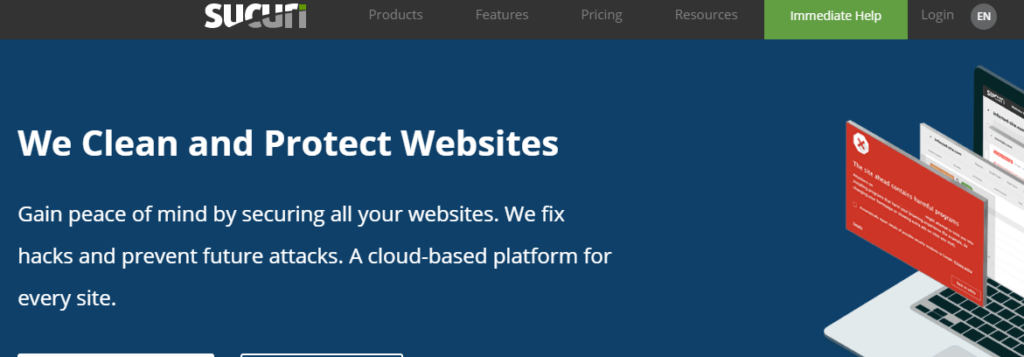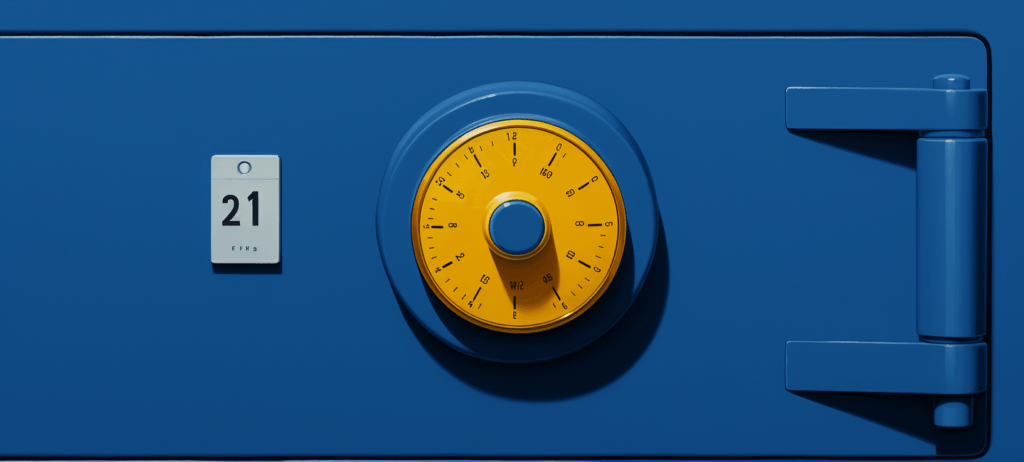- Home
- Blog
- Web Design
- 9 Steps for Creating a Secure Website – Make Your Site Secure
9 Steps for Creating a Secure Website – Make Your Site Secure
-
 7 min. read
7 min. read
-
 Trevin Shirey
Trevin Shirey VP of Marketing
VP of Marketing
- Trevin serves as the VP of Marketing at WebFX. He has worked on over 450 marketing campaigns and has been building websites for over 25 years. His work has been featured by Search Engine Land, USA Today, Fast Company and Inc. Read his review of working with WebFX for the last 15 years.
An online presence gives your business valuable visibility, but creating a secure website instills consumer confidence in shopping with your business. While launching a company website can generate brand awareness and more convenient interactions with customers, it’s imperative to prioritize security when building your site — otherwise, your website could repel customers.
Ready to learn how to make a website secure?
Keep reading, as we’re covering the nine-step process of creating a secure website for your business. If you need a secure website for your business now, though, contact us online or call us at 888-601-5359 to learn more about our web design services!
1. Choose a capable host
When you start your website, you have several hosting options, but each provider has unique advantages that can improve your site. The degree of security depends on whether they have features like web application firewall (WAF) and denial-of-service (DDoS) protection.
Established web hosts like Bluehost (which also provides website security solutions) and GoDaddy allow you to decide on the extent of your safety, and this is the first move in how to make a website secure.  WAF is a particularly crucial component because it averts attempts to breach your website.
WAF is a particularly crucial component because it averts attempts to breach your website.
Structured Query Language (SQL) injection and cross-site scripting are two ways your information can become exposed to attacks, but WAF monitors these serious issues.
Data loss or out-of-commission websites can turn away potential customers, but partnering with an effective hosting provider can keep your site online and secure, which is critical if you’re an ecommerce store or feature user accounts.
2. Select the right content management system
A content management system (CMS) is a useful tool to construct your website and manage future content, and the most beneficial ones are continually advancing their protections, overseeing the program code, and sustaining fast processes.
While creating a secure website, you need a robust CMS. As vulnerabilities arise, an equipped CMS can defend your website and ensure minimal security gaps. These systems cycle through updates to bolster their software, and the latest versions can help your site withstand the most recent weaknesses and hacking methods.
Many popular CMS platforms, like Joomla and WordPress are user-friendly and facilitate safety, which makes installing modifications convenient for not only your development team but also your marketing staff. 
3. Manage add-ons and plugins
While plugins and add-ons can enhance the experience for your visitors, an overabundance can open your website to hazards. They can also slow your site down and impede responsiveness.
Periodic add-on and plugin inspection can reduce the likelihood of defective extras. Whether these additions are from your CMS or a third-party, it’s essential to examine the reputation, details, and revision history of plugins and add-ons.
Just like a CMS, these website accessories require upkeep and regular maintenance.
Their defense mechanisms to bugs are only as good as their development.
If they become outdated, they open your business to security risks. You can also take advantage of security-specific add-ons that limit viruses. WordPress plugins like Wordfence Security or Sucuri Security can reduce infiltration and assist you in your journey to learn how to build a secure website.

4. Enable different access levels
In your business, different personnel can contribute their expertise to your site, but distinct tiers of control can help you supervise their behavior and safeguard your website. Restricting permission for specific areas of the website or actions can prevent errors and crashes.
Separate logins for employees are a valuable way to manage tweaks and publish content that can fend off mistakes. Business owners and higher-ups can hold the maximum privileges, which leaves the responsibility of website changes to them.
This approach can preserve your business’ online presence and prohibit devastating setbacks.
5. Implement reliable passwords
Inadequate passwords frequently cause online data breaches, and this can severely hamper businesses. With a range of personnel collaborating on your website, it’s essential to have set password practices. Cybersecurity professionals suggest that users should utilize a diverse number of passwords on platforms.
To set your business’ website passwords apart, you can adopt original passwords with a variety of symbols, letters, and numbers.
Two-factor authentication (2FA) is another screening technique to deter hackers. A second factor like an additional code can better identify approved users, and many CMS platforms include this feature in their security measures.
6. Set up automatic backups
Investing in your website takes effort and time, but servers can fail, destroying your hard work.
Backup systems are excellent solutions that can revive your company’s core website materials and expedite your relaunch. While you need to find the underlying issue that initiates the crash, you can shield your business from time-intensive recovery and redundant work with a backup system.
Store your data in a trustworthy location, like the central server, to protect your content against potential threats. Automatic backups of your website’s content and layout can keep you from starting from scratch.
For the best results, install automated backup technology to collect your data routinely.
7. Keep security subscriptions updated
Recurring security applications from your host or CMS usually get renewed through subscriptions. Paid subscriptions require you to refinance them promptly. If you don’t, no one vets your platform when these subscriptions end.
Malware can capitalize on this, so updating these protective elements is a priority.
Tracking your various services can keep you informed on which subscriptions are running out and how integral they are to your website. Setting alerts or enabling auto-renewal for these features can close the breaks in subscriptions.
8. Include a secure sockets layer certificate
Secure transactions are a critical function for businesses, and secure sockets layer (SSL) certificates are the way to guard online purchases. When you request information from customers or website visitors, you can verify the interchange with SSL, typically provided by your host.
Cybercriminals can gather unencrypted information or plain text, but SSL allows you to receive sensitive data like credit and debit card numbers by encrypting them. Along with SSL, business websites can exchange an HTTP address for HTTPS.
This address improves your site’s security and serves as a trust signal to customers and business partners, which is critical.
9. Set aside testing time
While you’re structuring your website and security measures, you can account for plenty of liabilities and still be unaware of lingering instability.
Systematically going through your website to test each portion can reveal sections that need work. You can run through the pages and processes that visitors will see, and if error messages, redirections to HTTP addresses rather than HTTPS, or suspicious glitches happen, you can immediately deal with them.
Designating a testing interval can catch areas and give you a chance to patch up the website. Although you may be eager to launch your site, carrying out the finishing touches on security can provide you with a reliable platform.
Need a secure site now?
Get a secure website in 30 days
To make your website a reflection of your business, you can gain support from experts who have helped countless companies launch successful sites. Check out WebFX’s rapid web design services to create a stable website your company can trust in 30 days. You can also head to the nearest hub in your area:
- Baltimore web design agency
- Atlanta web design agency
- Fort Myers web design agency
- and 30 other locations
We have received over 155 web design awards, which is proof that our web design leads to safer, functional platforms that can increase your revenue and earn you valuable sales, leads, and traffic. Contact us online today or call us at 888-601-5359 to speak with our helpful team members!
-
 Trevin serves as the VP of Marketing at WebFX. He has worked on over 450 marketing campaigns and has been building websites for over 25 years. His work has been featured by Search Engine Land, USA Today, Fast Company and Inc. Read his review of working with WebFX for the last 15 years.
Trevin serves as the VP of Marketing at WebFX. He has worked on over 450 marketing campaigns and has been building websites for over 25 years. His work has been featured by Search Engine Land, USA Today, Fast Company and Inc. Read his review of working with WebFX for the last 15 years. -

WebFX is a full-service marketing agency with 1,100+ client reviews and a 4.9-star rating on Clutch! Find out how our expert team and revenue-accelerating tech can drive results for you! Learn more
Make estimating web design costs easy
Website design costs can be tricky to nail down. Get an instant estimate for a custom web design with our free website design cost calculator!
Try Our Free Web Design Cost Calculator
Table of Contents
- 1. Choose a capable host
- 2. Select the right content management system
- 3. Manage add-ons and plugins
- 4. Enable different access levels
- 5. Implement reliable passwords
- 6. Set up automatic backups
- 7. Keep security subscriptions updated
- 8. Include a secure sockets layer certificate
- 9. Set aside testing time
- Need a secure site now?


Web Design Calculator
Use our free tool to get a free, instant quote in under 60 seconds.
View Web Design Calculator
Proven Marketing Strategies
Make estimating web design costs easy
Website design costs can be tricky to nail down. Get an instant estimate for a custom web design with our free website design cost calculator!
Try Our Free Web Design Cost Calculator
What to read next





